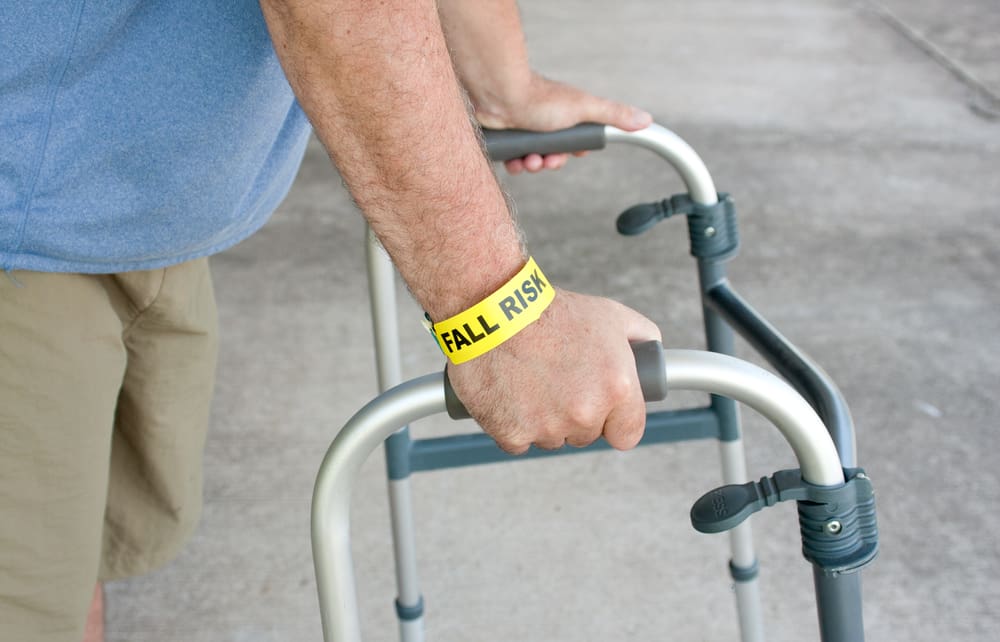Over one million older people fall at home each year. It’s the most common cause of injury for over 65s, and can cause distress, injury and a sudden, sharp decline in overall health. Making the home environment a safe and welcoming space is key to ensuring that older people get to experience the dignity, independence and health benefits of living at home, while also reducing the risk of injury.
Over one million older people fall at home each year. It’s the most common cause of injury for over 65s, and can cause distress, injury and a sudden, sharp decline in overall health. Making the home environment a safe and welcoming space is key to ensuring that older people get to experience the dignity, independence and health benefits of living at home, while also reducing the risk of injury.
Here, we explore the risks to watch out for, and how they can be mitigated to improve safety for loved-ones.
What are the primary health-related factors that cause falls among the elderly?
The changing health and physical capability of older people is often a major factor that increases the likelihood of a fall around the home. A once routine environment can suddenly become more hazardous to navigate as a person’s physical or cognitive ability is impaired.
Declining health inevitably affects people differently, however these are the some of the most common conditions associated with increased fall risk:
- Stiff joints, muscular degeneration and brittle bones caused by conditions such as arthritis, osteoporosis and osteoarthritis.
- Dizziness, unsteadiness or loss of consciousness due to low blood pressure, hypotension or heart disease.
- Misconception of environment due to visual impairment, dementia or reduced reaction times.
What are the environmental factors that contribute to fall likelihood?
The home can become a trickier environment to navigate as we age. A reduction in ability due to an age-related condition can change how a person is able to interact with familiar settings.
These are some environmental factors to watch out for when assessing the suitability of a space for older people:
- Mess or clutter that can be caught under foot or has to be avoided.
- Unsecured furnishings, such as raised rugs and rickety chairs.
- Outdoor spaces that become difficult in adverse weather conditions, such as snow and rain.
- Steep or winding staircases.
- Dim lighting.
- Bathroom and kitchen surfaces without adequate hand-rails and non-slip surfaces.
- Storage of regularly used items out of easy reach.
How can you mitigate the risk of falls in the home?
You can mitigate your loved one’s risk of falling around the home by making changes both to their capability and home environment. These are some of the ways that you can help mitigate for physical and cognitive conditions:
- Strength and balance training.
- Physiotherapy and regular exercise.
- Testing sight and hearing.
- Reviewing medications to limit adverse side effects.
- Maintaining personal hygiene to alleviate discomfort and infection risk.
With some investment of time and money, the home can also be made safer. Here’s a brief breakdown of common changes to consider:
- Re-organise home to ensure a minimum of strenuous movement.
- Removing clothes that trail or don’t fit properly.
- De-cluttering living space by getting rid of some furniture and putting unsecured items in storage.
- Using high-wattage bulbs and removing heavy drapes to brighten the space.
- Providing a wearable emergency alarm.
- Integrating a stair lift and support railings.
Helping your loved-ones to stay safe and independent in their own homes for longer is possible, but it takes time, expertise and dedication to get right. It’s likely that the environment will need to be re-assessed regularly as needs change, and it takes close, daily interaction to know which measures are working and which aren’t.
There are many proven health benefits related to empowering older people to stay in their own homes for longer, but not everyone has the resources to achieve this. At The Good Care Group, we’ve spent years gathering research and testing new methodologies to reduce the risks of falls at home.
Our innovative Falls Management Programme enabled a 97% reduction in falls within nine months among vulnerable clients, and rate of falls per year is 12% – 37% below that of care home residents. We achieve this by aggregating feedback from our expert carers, clients and their loved ones. This is then considered in the context of cutting edge medical research, in order to develop new and unique forms of strategy that have been used to guide government policy and enhance the lives of our clients.
If you want to find out how The Good Care Group could help your loved-one gain independence and dignity in their own homes for longer, contact our team today.
